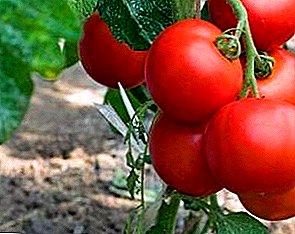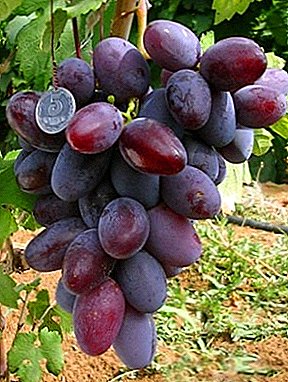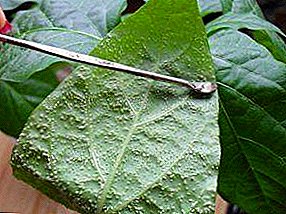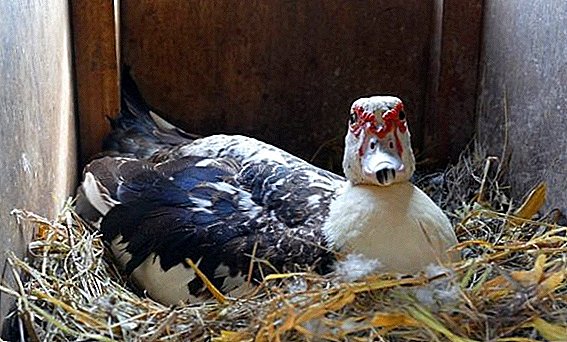 The most successful designs of cars over time become overgrown with legends and become a kind of epoch symbols. However, many of them are successfully operating and are still being produced. One of these "long-livers" we consider in the review. We learn what is remarkable about the device of the legendary combine "Niva SK-5".
The most successful designs of cars over time become overgrown with legends and become a kind of epoch symbols. However, many of them are successfully operating and are still being produced. One of these "long-livers" we consider in the review. We learn what is remarkable about the device of the legendary combine "Niva SK-5".
History of creation
The whole conveyor “life” of this machine is connected with the Rostselmash plant. In the late 1950s, local engineers brought the self-propelled SK-3 to the conveyor. For the enterprise, it was a breakthrough - before that, only trailed units were produced there.  The Troika had large reserves, which was used by the designers, who “issued” the more productive SK-4 model in 1962. It turned out to be extremely successful, having collected a lot of awards at various agricultural exhibitions.
The Troika had large reserves, which was used by the designers, who “issued” the more productive SK-4 model in 1962. It turned out to be extremely successful, having collected a lot of awards at various agricultural exhibitions.
Such a successful chassis and served as the basis for the "five". Its development and running-in took a lot of time - the first serial SK-5s were released only in 1970, and for another 3 years the new product was produced in parallel with the already familiar combine.
The same time it took to fine-tune the first running instance - the “prototype” was ready as early as 1967.
Important! Running in provides two modes - no load (2.5 hours) and working (60 hours). At the first idle starts, diesel is allowed to work for no more than half an hour. With a more intensive cycle, the load is gradually increased to 75%, with mandatory inspections and maintenance according to ETO standards after every 10 hours.The efforts of the engineers were not in vain - it is difficult to find a person who has never seen this “veteran of the fields”. He endured many upgrades, and the "fresh" copies are still being made.
 The cabin became more comfortable, the corporate red color was replaced with green, and the figure in the name disappeared, replaced by the word “effect”. But the proven design works just as efficiently.
The cabin became more comfortable, the corporate red color was replaced with green, and the figure in the name disappeared, replaced by the word “effect”. But the proven design works just as efficiently.Where combine is used
The main "field of activity" of this model is the cleaning and primary processing of cereals. Due to the rather compact size and maneuverability of the combine, it is excellent for processing narrow areas or conditions of difficult terrain.
There is also a version for weak, wet soils. This is a machine with a semi-tracked drive, which is also mastered by the plant.  Experienced machine operators know that in the "constrained" field, the usual "Nivas" have no equal - in such conditions they will give odds to more powerful imported combines.
Experienced machine operators know that in the "constrained" field, the usual "Nivas" have no equal - in such conditions they will give odds to more powerful imported combines.
Specifications
To understand how attractive the SK-5 Niva combine is, consider the current technical characteristics of the current basic model:
- engine: six-cylinder in-line diesel with supercharged, four-stroke;
- power (hp): 155;
- drum speed (rpm): 2900;
- number of knives: 64;
- bunker volume (l): 3000;
- unloading speed (l / s): 40;
Did you know? Among the modifications came across and truly unique cars. What is at least a combine capable of separating pumpkin seeds from the pulp, created in the 1970s. But it was a single instance.
- unloading height (m): 2,6;
- cleaning type: two-screen;
- header width (m): 5;
- total length of straw walker (m): 3.6, consists of 4 components;
- threshing mechanism: drum type;
- drum diameter (m): 0.6;
- type of inclined camera: conveyor;
- length (m): 7.60;
- width (m): 3.93;
- height (m): 4.1;
- dry weight (t): 7.4.

Combine Engine
Modern "Niva" equipped with diesel brand MMZ - D.260.1. This engine volume of 7.12 liters is perfect for various jobs.
The fact is that he has a good stock of torque (622 N / m), which provides good traction even under full load or when passing a difficult section.  The motor can be “unwound” up to 2100 rpm, but in practice they try to “catch” the average (about 1400) turns - in this mode the peak of power is reached.
The motor can be “unwound” up to 2100 rpm, but in practice they try to “catch” the average (about 1400) turns - in this mode the peak of power is reached.
Liquid cooling is indispensable for field work, in this regard, the Minsk diesel engine is preferable to “air vent”.
For long field work, you will also need tillers, a tractor and a mini-tractor.The weight of such a unit is 650 kg. From its obvious advantages, smoother work and moderate “appetite” are noted. Passport fuel consumption for the Niva combine harvester equipped with this engine is 25 liters per working hour. This figure may differ depending on the nature of the operations performed and the correctness of the diesel adjustments.
Important! If the first start-up of the engine is carried out at a temperature below +5 ° C, then the oil poured at the factory should be changed to the winter M8 (fluids with indices DM and G2K are suitable).
As the "heart" of this machine can also act such motors as:
- SMD-17K and SMD-18K (both - 100 hp each);
- 120-strong SMD series 19K, 20K and 21K supercharged.
Chassis
This group of knots includes 2 bridges: driving wheels and steered.
Of course, the first is more complicated in construction. It is composed of:
- gearboxes;
- clutch;
- differential;
- block with brake;
- 2 onboard gearboxes;
- directly wheels.
 The gearbox of the popular Niva CK-5 combine harvester is three-stage, equipped with 3 shafts and a set of gears, 2 of which are made movable (like carriages) and mounted on the drive shaft.
The gearbox of the popular Niva CK-5 combine harvester is three-stage, equipped with 3 shafts and a set of gears, 2 of which are made movable (like carriages) and mounted on the drive shaft.The first "grabs" the first gear, and the second - the second and third speeds. After switching on the transmission, the “free” gears are blocked by a special mechanism.
On the receiving pulley of the drive shaft of the box is placed clutch disc clutch, while the releaser with the help of 12 springs presses it to the inner side of the pulley. If the clutch is disengaged, the clutch releases the driven disc and redirects the rotation to the transaxle.
Did you know? The first Soviet harvesters were produced in 1930 in Zaporizhia. By today's standards, cars were named in the spirit of the times. - "Communard".The steer wheel axle is easier equipped:
- rigid beam;
- pivots;
- trapezoid in block with hydraulic cylinder;
- wheels.
 Wheel axles are held at the ends of the beam by means of pivots and hinges. Hubs are attached to the axles themselves with tapered bearings.
Wheel axles are held at the ends of the beam by means of pivots and hinges. Hubs are attached to the axles themselves with tapered bearings.Variable speed drive
On all modifications of the combine the klinoremenny drive is installed. Simply put, the moment from the motor is transmitted to the gearbox pulley by a belt, and the whole process is controlled by the variator.
This system, shifting the drive unit drive, moves the belt along the pulley, thereby changing the width of the stream. The belt itself at the same time moves down deeper or is displayed "on the edge" (then the diameter increases).  The operation of the mechanism is regulated by the valve of the hydraulic distributor, the handle of which is brought into the cabin. To give full speed, it is transferred all the way forward, and to reset the speed - back.
The operation of the mechanism is regulated by the valve of the hydraulic distributor, the handle of which is brought into the cabin. To give full speed, it is transferred all the way forward, and to reset the speed - back.
Cab and steering
In terms of comfort, the Niva pulled up to modern requirements. Due to new upholstery materials, soundproofing became better, and it became a bit more comfortable to be inside - on previous versions the combiner was, in fact, in a heated iron box with poor ventilation. On the new cars the conditioner is provided (the truth, as an option).
Important! When buying a used combine, pay special attention to the state of the metal (after inspecting all the nodes below), the fuel and hydraulic systems. "Sick places" old copies - this is, first of all, the frame and the thresher, corrosion immediately "hits" it on them.Sitting on the workplace, the driver sees in front of him:
- steering column;
- to her right is a gearshift lever, separate brake and unloading pedals;
- on the left side of the steering wheel are the clutch pedals and the parking brake lever;
- under the steering wheel there is a fuel supply lever, on different versions it can be located on either side of the “donut”.
 The sprung seat is adjustable in two planes (horizontal and vertical). On the right, in the corner of the cab, is an instrument panel with a set of warning lamps and controllers.
The sprung seat is adjustable in two planes (horizontal and vertical). On the right, in the corner of the cab, is an instrument panel with a set of warning lamps and controllers.Instruments are also installed there - indicators of oil pressure and water temperature, drum tachometer and ammeter. The latter may not be - many farmers put simplified shields.
A lot of space is occupied by the control unit of working mechanisms and systems: drum, header, "dumping" of the bunker, etc.
Did you know? The first self-propelled combine mastered in the USSR was C-4 (1947-1958). It is curious that politics intervened in his “fate” - until 1956 it was called "Stalinist", and after the Twentieth Congress, the name was reduced to the initial letter.The drive (rear) axle is controlled with the help of hydraulics - there is no direct mechanical connection between the steering wheel and the wheels, everyone takes over the power steering and nozzle system through which the working fluid supplied by the dosing pump circulates.
 This approach significantly reduces the backlash, but there are also difficulties. So, with an incorrect adjustment of the steering wheel becomes too "tight."
This approach significantly reduces the backlash, but there are also difficulties. So, with an incorrect adjustment of the steering wheel becomes too "tight."Familiarize yourself with the MT3-892, MT3-1221, Kirovets K-700, T-170, MT3-80, Vladimirets T-25, MT3 320, MT3 82 and T-30 tractors that can be used for different types of work .
Hydraulic system
These combines have 2 hydraulic systems. The main serves the working units, and the steering facilitates control.
The design of the main circuit includes:
- pump type NSH-32U;
- safety valves;
- the distributor on 7 exits;
- two-way HZ variator;
- hydraulic cylinders for raising header and reel.
 In turn, the steering circuit includes:
In turn, the steering circuit includes:- pump NSh-10E;
- spool valve;
- dispenser;
- worker (he is power) cylinder.
It will also be useful for you to familiarize yourself with the technical characteristics of the Salyut 100, Neva MB 2, Zubr JR-Q12E moto-blocks.
Combine harvester
For the combine "Niva" it is one of the most important systems, in importance it is often put on a par with the engine. The main components and parts are:
- The case on which all working components are mounted. It is connected to an inclined camera using pendants and a hinge. This whole structure is balanced by rigid springs. It is attached to the articulated telescopic gear with access to the knives.
Important! Before bringing the combine to the road for moving, the bunker must be emptied - Even a small download is prohibited.
- Shoe, adjusting the height of the cut. “Extreme” are designed for 5 and 18 cm, whereas intermediate options are 10 and 13 cm.
- Reel, grabbing the stalks when cutting and directing them to the auger. In fact, it is a shaft with fixed cross-pieces, onto which small tubular rollers with fingers (tines) are attached. They, in turn, are spring-loaded.
- Cutting edge. On a bar there are single fingers with riveted knife plates moving in different directions. In addition, there are also clamping blades and friction plates. The movement of the knives are a bunch of "hinge - telescope."
- Screw. This is a cylinder with welded "dissimilar" tapes in the form of spirals - they go in different directions, and during rotation they shift the stems in the middle. There they are picked up by a special finger, which sends this mass to the conveyor.
- "Floating" conveyor. It is made oblique and leads the grain to the grind. Here are 2 shaft with stars on the edges - leading and driven. Sleeve-roller chains with steel strips are "responsible" for transportation.
- Pickup. Collects beveled stems and sends them to the "bottom" of the header. To install it will have to remove the reel.
Major modifications of the combine
In addition to the basic model, “representatives” of other modifications are on the move. There were a lot of them for almost 50 years of release, so we will focus on the most common ones. They are simply denoted - letters and digital indices are added to the abbreviation "SK":
- 5A indicates a 120 hp engine;
Did you know? Some of the nodes "Niva" went to the manufacture of tomato-cleaning complexes SKT-2. It was very convenient for farms - in the conditions of a shortage of spare parts, the parts from the "tomato" combines were rearranged to the usual "five" without interrupting production.
- The 5AM version is equipped with a 140 horsepower engine, and the gearbox is shifted to the left;
- 5M-1 differs hydrostatic transmission;
- SCC-5 is designed to work in areas with difficult terrain and "takes" slopes up to 30 °;
- The SKP-5M-1 is a semi-tracked modification for "wet" soil.

Advantages and disadvantages
For all the time of operation "Niv" accumulated a huge experience, and everyone who dealt with agricultural machinery knows about the "nature" of these combines.
They have a lot of advantages:
- thoroughly studied design;
- good maneuverability with small dimensions;
- low price;
- availability of any spare parts and high maintainability;
- acceptable quality of grain cleaning;
- good performance with relatively small collection losses.
- periodically "flying" drive belts;
- difficulties in mounting the header and attachments; more than one generation of machine operators "invented" in the field conditions various slopes, splicing and brackets;
- not particularly smooth running at full load.
Important! Many complain about the problem of "tight" steering. This may be due to the sticking of hydraulic valves or improper adjustment.Despite these drawbacks, the “good old” SK-5 does not lose ground. Beginning farmers willingly take the "used" combines and, having invested some forces and means, exploit them for many years. The abundance of spare parts guarantees "Niva" long life.
Now you know what made such a great mechanism so popular. We hope this information will help determine the choice of technology. Record harvests!












